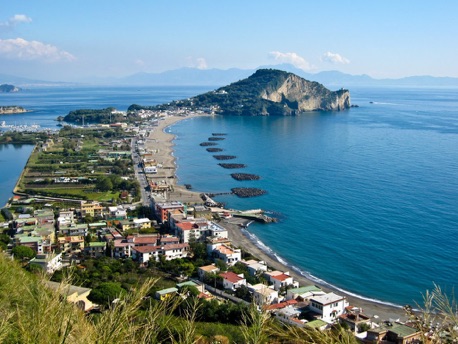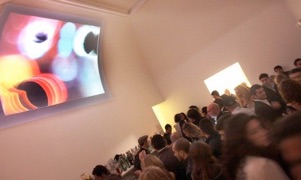PHLEGRAEAN FIELDS





TOUR DESCRIPTION
The Phlegrean Fields is an area, well connected to the metropolis of Naples, full of history, art and nature. An intact series of extinct volcanoes, in a varied and animated landscape, that crowns a blue sea. It is a fascinating area, owing to its various and pleasant landscape and to the numerous now extinct craters, with whose dormant volcanic activity, however, the phenomenon of bradyseism and the hot spring are connected. The origin of the name Phlegraean (burning) Fields is Greek and is justyfied by the volcanic activity so evident to the first Aegean sailors.
POZZUOLI
Pozzuoli is one of the most fascinating archaeological areas. Main port of the region in Roman times, the city revealed a surprising underground with the excavations in the Rione Terra.
Founded in 520 B.C. by Greek colonists who give it the name “Dicearchia”, or “Just Government”, it was named Puteoli by the romans (for the malodorous sulphur vapors that its wells emitted), and became one of the main ports of the Tyrrhenian Sea.
The temple of Serapis is proof of the lively commerce conducted in Puteoli.
In 1750 a statue of the Egyptian god Serapis was found and therefore the edifice was mistakenly held to be a temple. It was the "macellum", market of fish and meat, annexed to the port area ( I- II c. AD). The three columns of grey cipolin bear evident traces of the boles made by lithodomi (marine mollusks) and show the effects of bradyseism. The Macellum is enclosed in a rectangular area with a porticoes court and a row of "tabernae" (shops) down each side.
In the middle of the court rises a "tholos", a kind of circular temple whose entablature was supported by sixteen columns.

CUMA
The acropolis is all that is left of the first city of the colonies of Greater Greece, founded in VIII century B.C. by colonists in exile from the Eubean Island, their motherland. It sits in a magnificent strategic position facing the sea and is today in a suggestive archeological park.
It is precisely on these Eubean shores that Virgil places the main character of his Aeneid.
This is the place where Aeneas questioned the priestess oracle of Apollo, the Sybil, about his future. The Sybil’s cave is a long tunnel that ends in a three roomed niche, believed to be the seat of the Sybil of Cuma, a priestess sacred to the god Apollo giving from her cavern ambiguous interpretations of the future. Her responses were written on pages that she would then scatter to the wind.
Yet Cumae is not just the first city in this area, by any means; it was also one of the richest and most educated, so much so that its inhabitants, the Cumeans, very soon took on the role of founders of new colonies such as Parthenope and Neapolis.
An intact series of extinct volcanoes, in a varied and animated landscape, that crowns a blue sea.
Tour Price: 200 € - 3.5 hrs guided tour
300 € - 7 hrs guided tour
Tour type: Archaeological and historical tour; Private tour; Walking tour.
Duration: 3.5 hours or 7 hours
Running days: Every day
Maximum travelers: 10 (a small group guarantees a service of better quality) Tours for larger groups can be arranged on demand.
Main attractions: Archaeological area of Cuma, Thermal Baths at Baia, Piscina Mirabilis in Miseno
What’s not included: Entrance ticket (4 €); Transportation (It can be arranged with Mercedes Limousine, Mini Van or Bus; Hotel pick-up or drop-off)
Notes: Your own transportation is required for this tour.
Kid Friendly: Yes

I can arrange an itinerary for people with reduced mobility.
The Flavian Amphitheatre is the third biggest of the Roman world, after those of Rome and Capua.
Capable of holding up to 40.000 spectators, it's three levels were furnished with four main entrances and twelve secondary entrances.
As well as being an entertainment provision, the Amphitheatre was also a center of urban life.
Under the external arches of the structure there existed a range of localities dedicated to cults, professional and other groups, all indicated by inscriptions on the stone.
It is particularly rewarding to visit the subterranean complex which gives a good idea of the sort of services and general organization that must have been required for the functioning of the Amphitheatre.
It was also in this arena that some of the first Christian martyrs died such as the Patron of Naples St. Gennaro.


Archaeological tours, packages and exclusive multy day excursions in Campania for tourists, lovers,
scholars and students.
The Solfatara, the mythical entrance to the Ancient Romans' Hell, is an inactive volcano, part of the volcanic region known as Phlegrean Fields. It is famous for its steaming jets of sulphurous vapor. Sulphur was extracted here in the past, and until 1800 it was a spa renowned for its mineral waters, natural saunas and mud. The Solfatara is the epicenter of the cyclic phenomenon of the rising and lowering of ground level in the Phlegrean Fields known as bradyseism.
BAIA
In Roman times, the coasts and lands of Baia were celebrated worldwide and, in the last century of the Republic, Baia itself was considered to be a vacation resort. Thus, having a villa in this area became a real sign of prestige. The city was well equipped with all the comforts: temples, shops, the thermal baths, the ruins of which can still be admired inside the Archeological Park. From the port of Baia it is possible to enjoy coastal excursions and visits to the submerged city on glass-bottom boats; it is the only way to see the ancient Via Herculanea, as well as some mosaics on the floor dating back to the Roman Age.
The splendid Aragonese castle(built in the 1400’s and restructured by the Spanish Viceroys) hosts the Phlegrean Fileds Archaeological Museum, home to the relicts from Baia, Miseo and Pozzuoli. The view from the terraces of the fortess is unforgettable.


SHORE EXCURSIONS

BUY NOW THE TOUR OR MAKE A RESERVATION PAYING
A 60 EUR DEPOSIT

Copyright © Pompeiin.com - E-mail: info@pompeiin.com

túra tárlatvezetés Pompeii екскурзии на Помпей вођене туре Помпеји visites guiades a Pompeia prohlídky Pompejí vodstva od Pompeja guidede ture i Pompeji opastettuja Pompeijin des visites guidées de Pompéi მართვადი ტურები pompeii ポンペイのガイド付きツアー turais threoraithe Pompeii leiðsögn um Pompei тури на Помпеја guidede turer pompei rondleidingen
شهر پمپی راهنما van Pompeii zwiedzanie Pompei ทัวร์เมืองปอมเปอี visitas guiadas de Pompéia tururi ghidate ale orașului Pompei Экскурсии Помпеи prehliadky Pompejí vodene oglede Pompejev visitas guiadas a Pompeya guidade turer i Pompeji Führungen von Pompeji Pompei'nin rehberli turlar Екскурсії Помпеї tárlatvezetés Pompei 폼페이 투어
udhëzues Pompei - Кіраўніцтва Пампеі - употреба Помпей - guia de Pompeia - Průvodce Pompeje - vodič Pompeji - aktiviteter i Pompeji - juhend Pompei - Guide de Pompéi - treoir Pompeii - fylgja Pompeii - водич Помпеја - gids pompeii - Podręcznik pompeii - guia de Pompéia - Ghidul Pompei - Руководство Помпеи- водич Помпеја - Sprievodca Pompeje - vodnik Pompeji - guía de Pompeya - Guide Pompeii - kılavuz pompeii - Керівництво Помпеї - útikönyv Pompeii - ガイドポンペイ - გიდის pompeii - 가이드 폼페이 (Pompeii) شهر پمپی تور
кіраўніцтва Пампеі - Помпей - guies Pompeia - příruček Pompeje - 指南庞贝 - 指南龐貝 - 가이드 폼페이 (Pompeii) - vodiči Pompeji - guider Pompeji - juhendid Pompei - gabay Pompeii - oppaita Pompeii - guides Pompéi - guías de Pompeia - canllawiau Pompeii - გიდები Pompeii - ガイドポンペイ- गाइड Pompeii - panduan Pompeii - handbækur Pompeii - ceļveži Pompejas - vadovai Pompeii - водичи Помпеја - gwidi Pompeii - guider Pompeii - gidsen Pompeii - راهنمای گر شهر پمپی Prowadnice Pompeii guias de Pompéia ghiduri Pompei Руководства Помпеи
водичи Помпеја príručiek Pompeje Vodila Pompeji guías Pompeya Guider Pompeji ปอมเปอีแนะนำ Führungen Pompeji kılavuzları Pompeii керівництва Помпеї útmutatók Pompeii
Pompeii Tour guide - Herculaneum Tour guide - Pompei and Herculaneum tour - Stabiae Tour guide - Oplontis Tour guide - Naples Tour guide
Amalfi Coast - Sorrento - Positano - Paestum Tour guide - Capua Amphitheater - Procida - Ischia - Capri